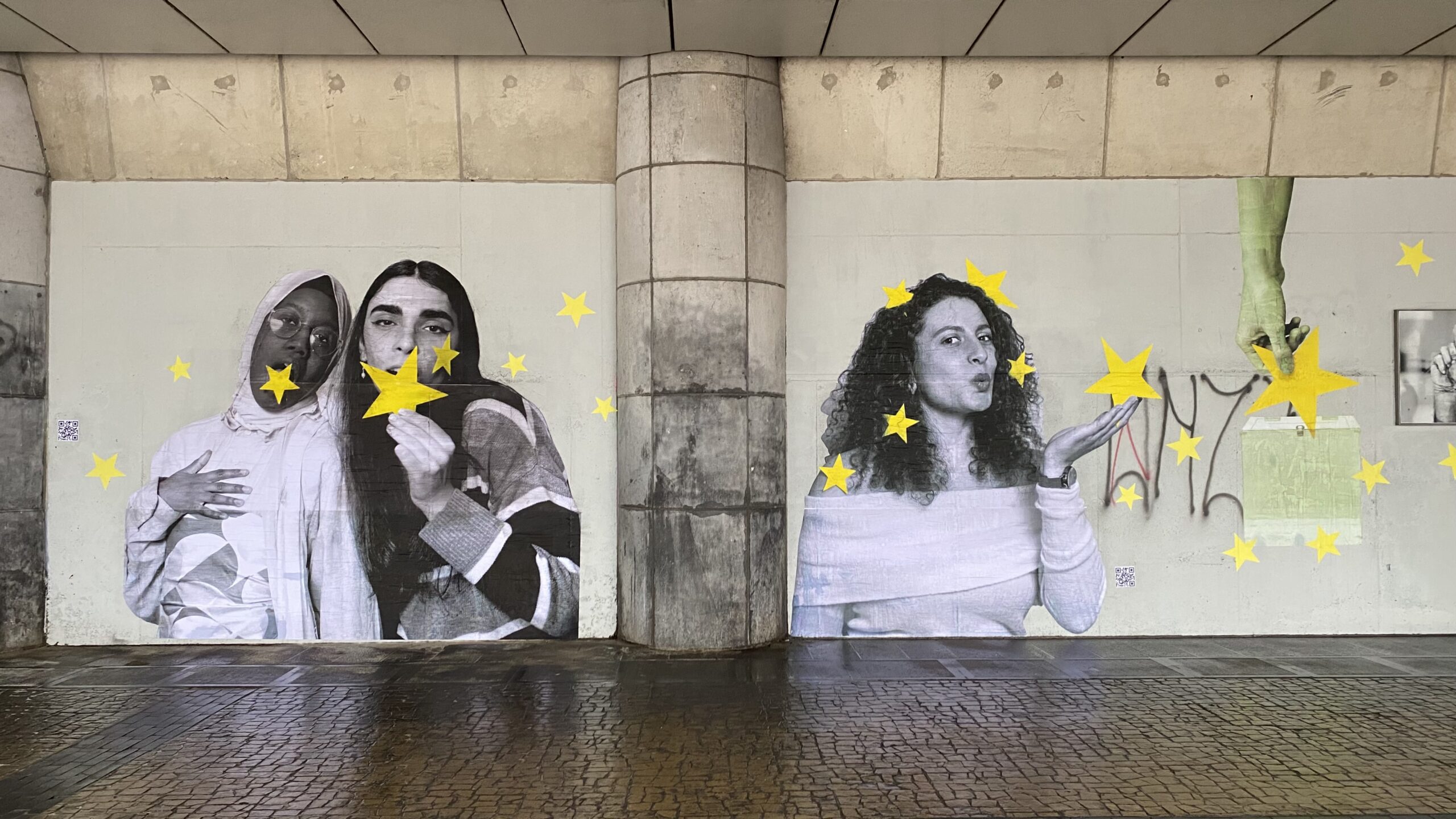How a cultural campaign tried to tackle low voter turnout in this year’s European election
Clara Passarinho, a young theatre director and co-founder of the Portuguese NGO Associação Da Minha Rua, remembers being told while growing up that young people are the citizens of the future. She rejects this notion. “Young people are the citizens of the present because we are impacting society today,” says Passarinho.
She warns that the media is reinforcing a dangerous and inaccurate narrative that claims younger generations are not engaging with the formal political processes in their countries. “If they say we don’t engage with politics, and if we don’t see any young people engaging, we will start believing it.”
Close to 51 per cent of voters cast their ballots in the 2019 European election, the first time there was an upswing in the declining pattern of voter turnout since the first European election in 1979. While this is the average across nations, some countries had significantly lower turnouts, such as 24.74 per cent in Slovakia. Passarinho’s country, Portugal, had a 30.75 per cent turnout.
Pop the Vote! Culture on the Ballot is a campaign launched by Culture Action Europe and sponsored by the EU. It tries to address the depressed voter turnout by encouraging engagement with the help of young activists and artists such as Passarinho from the 14 EU countries with the lowest voter turnout.
The project’s manager Maya Weisinger says the campaign’s mission is to bolster these young artists’ existing work and give them “support so that their voices are amplified, able to reach more people and able to work on their artistic practice through this opportunity.”
Weisinger believes the main reason for the low EU voter turnout is that people struggle to see the impact the EU has on their daily lives. “I think it’s very difficult to define, when we start talking about Europe and European values, because of the very rich, diverse histories,” she says.
She also thinks the EU’s language is too institutional, distancing the public from the issues that affect them.
To try to narrow that distance, the artists and activists recruited for the project attended a week of training in Brussels on“artivism” and how to engage their communities in conversations about the EU. They were then tasked with hosting two events in their home countries.

Emma Hanny, an Italian artist involved in the project, said that the training “was really special, seeing 44 artists working on the same themes and the same problems but in such different ways. I was a photographer and then there were people doing dance, opera.”
Hanny began her activism career by photographing the start of the Extinction Rebellion campaign as a student in Holland. She thinks photography is a strong medium for activism because “it is a universal language, no words needed,” adding that for her, the way to reach people is through “feelings — art works with feeling.”
She hosted a workshop for high school students, some of whom were eligible to vote in the European elections. They were asked to submit a photograph for exhibition addressing the question “How does Europe impact your life?”

Clara Passarinho is also motivated by the belief that culture can educate people about the EU. She thinks art can bring clarity to intangible concepts through giving them a visual form. “It’s very easy to see where culture is, but it’s not easy to see where the European Union is,” she says.
Passararinho recalls that after one of her workshops, some grandmothers came up to her and exclaimed: “I didn’t know that the European Union has had these impacts on our lives!’”

Stefanos Dimoulas, one of Pop the Vote’s activists from Greece, also speaks of experiencing the impact of his work firsthand. Dimoulas has advocated for LGBTQIA+ rights through dance, public speaking and founding a charity. He was the youngest Greek judge on Dancing with the Stars and has also given a TEDx talk. Greek politicians praised his efforts for contributing to the Greek parliament’s adoption of marriage equality and adoption rights.
“I didn’t have to become a politician to play a vital role, I did it as an artist,” says Dimoulas.
This is the mantra at the centre of Pop The Vote’s mission. The campaign’s impact has exceeded Weisinger’s initial expectation: “It’s not always guaranteed with such a large group, but it was really amazing to see how [the activists] were connecting their ongoing work in their own communities to this larger scope at a European level.”
Weisinger says she cannot measure the extent to which the campaign has led to more votes at the ballot box but she is proud that the activists have been able to facilitate “crucial conversations at times where it’s been difficult to.”
Feature Image: ‘Pop the Vote!’ public artwork in Brussels. Photo credit: Oriana Elicabe

